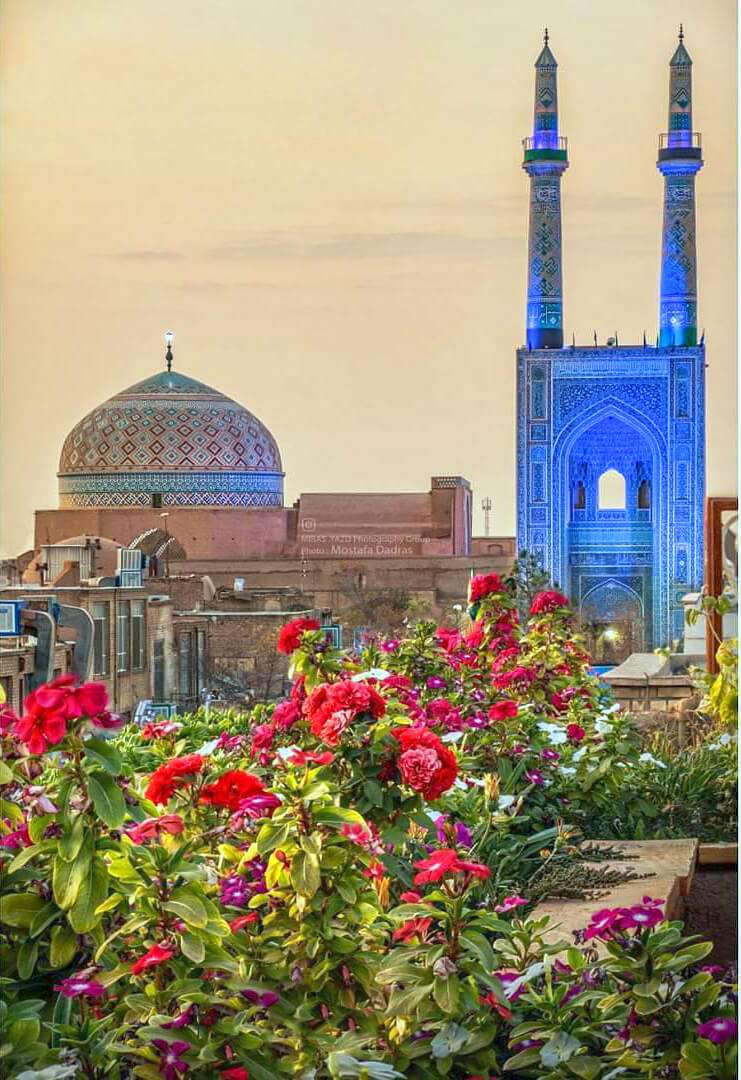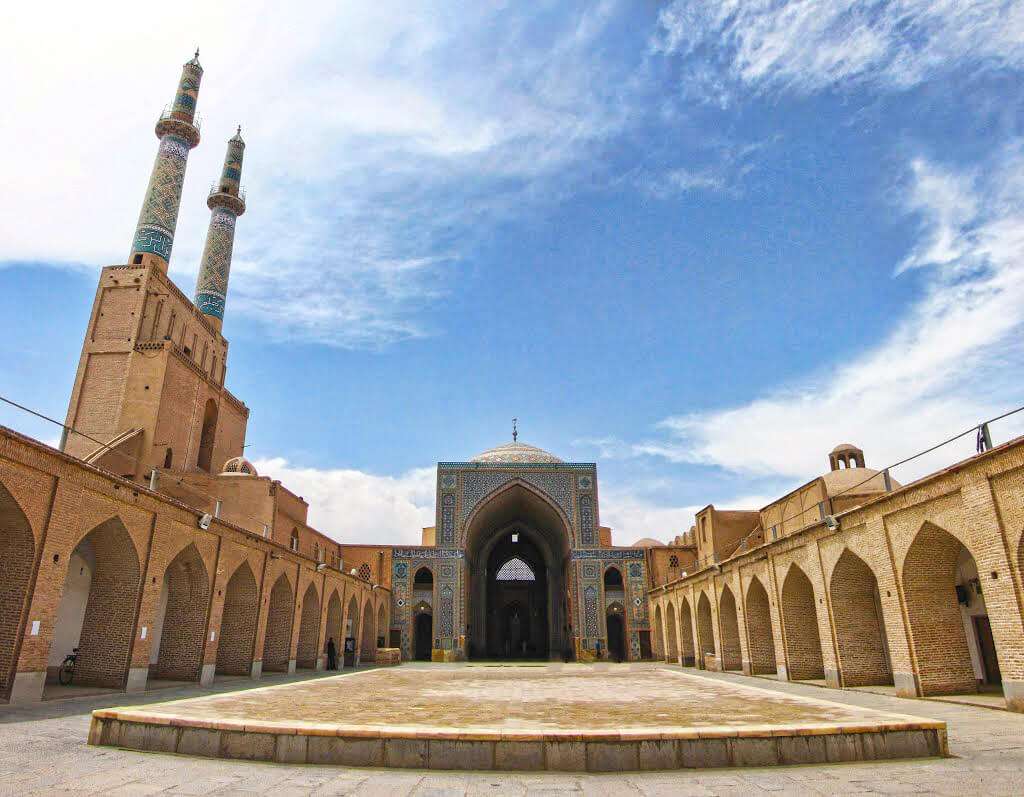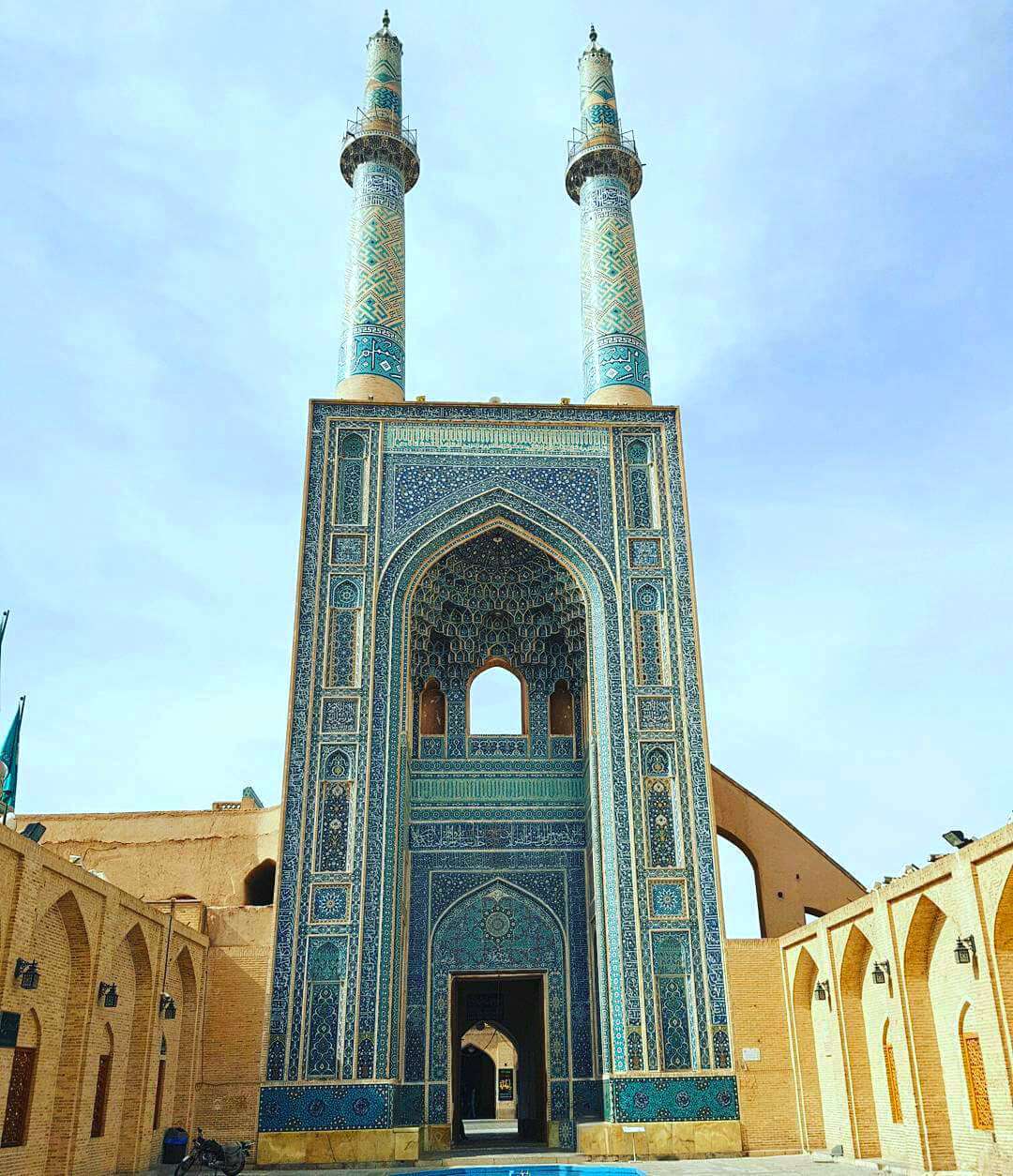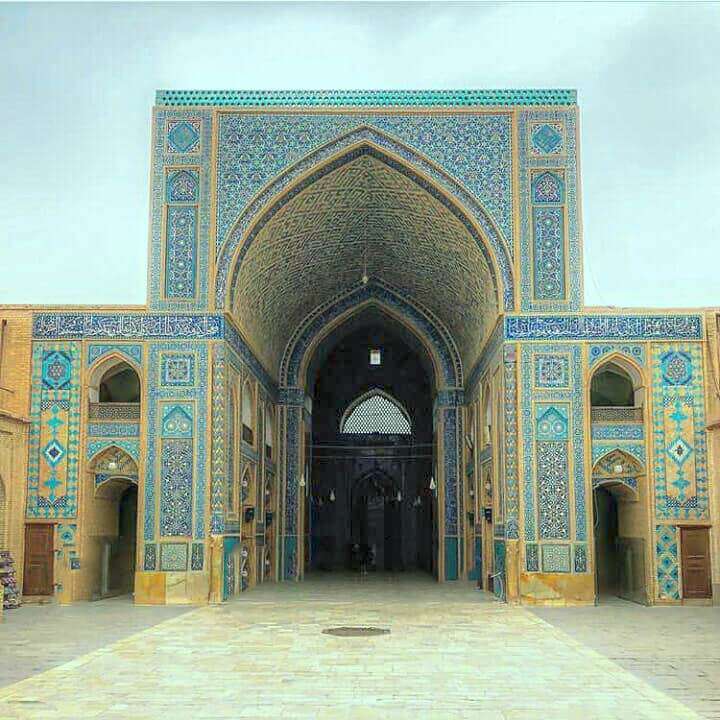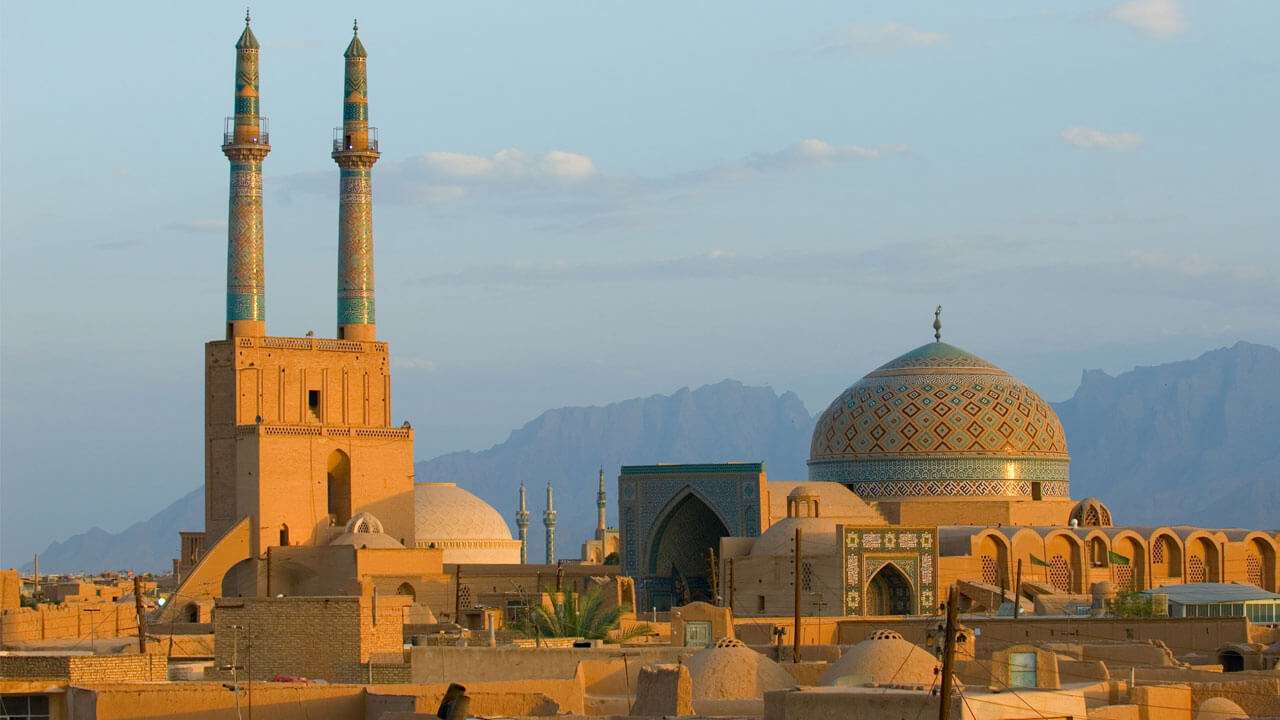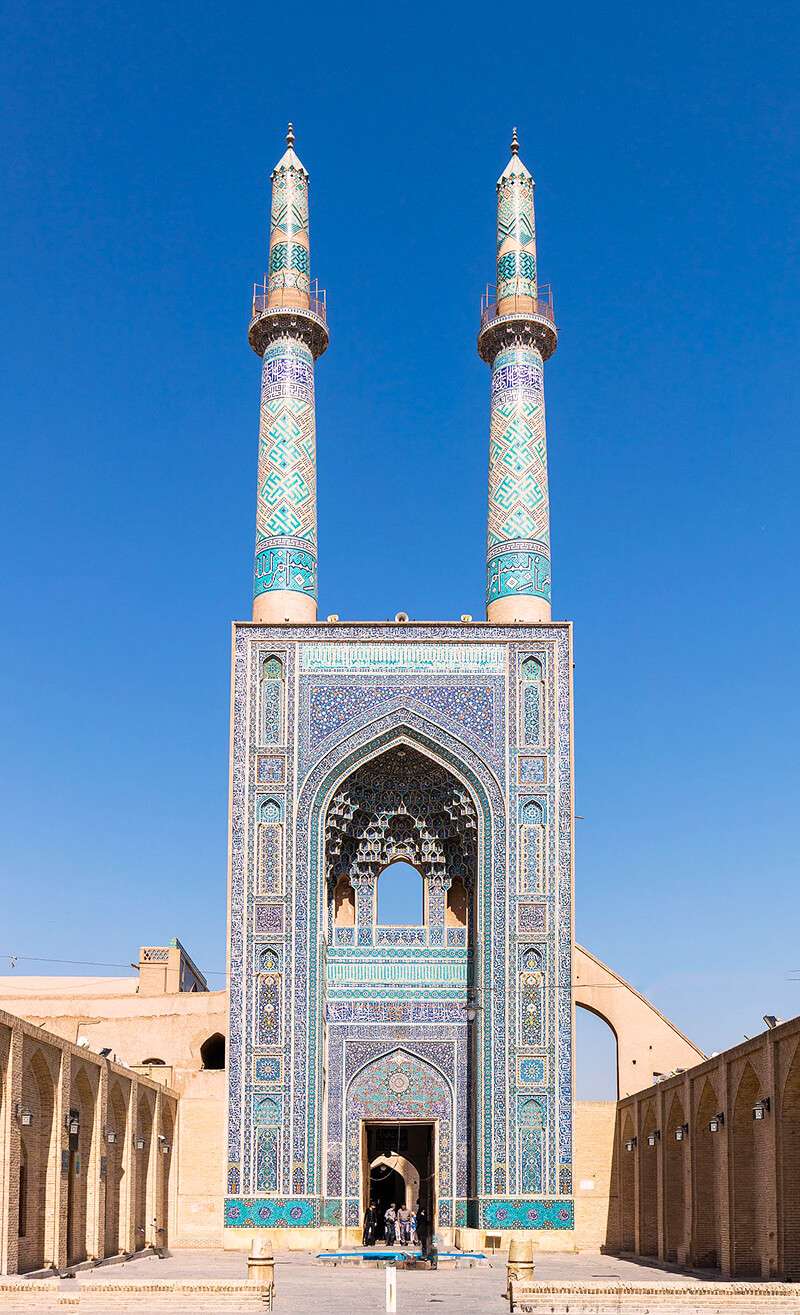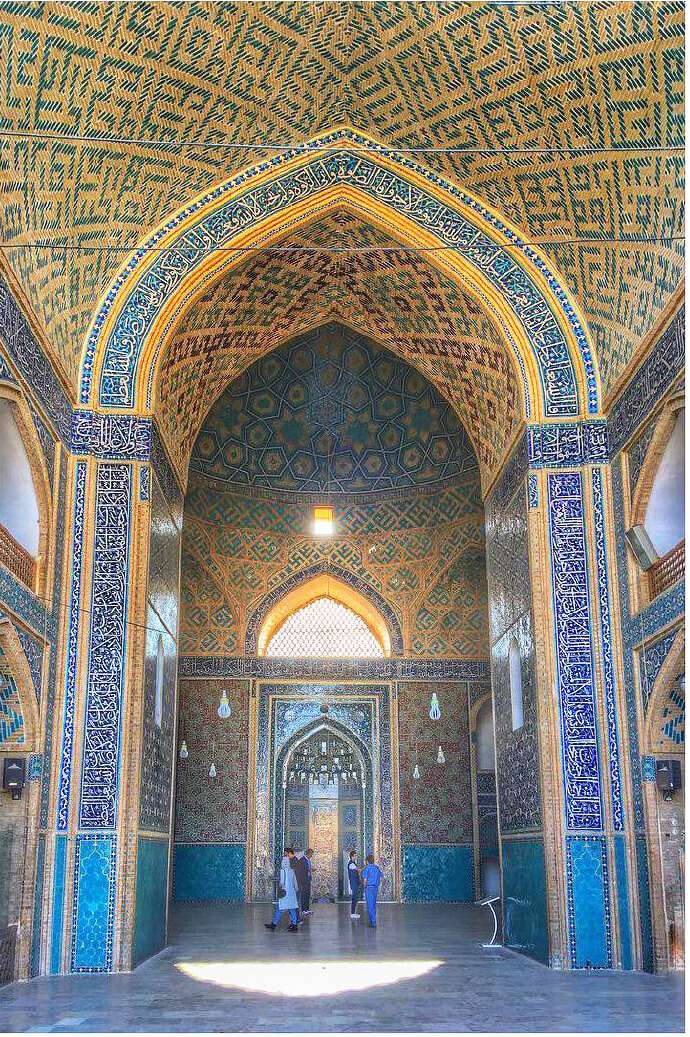Jame Mosque of Yazd
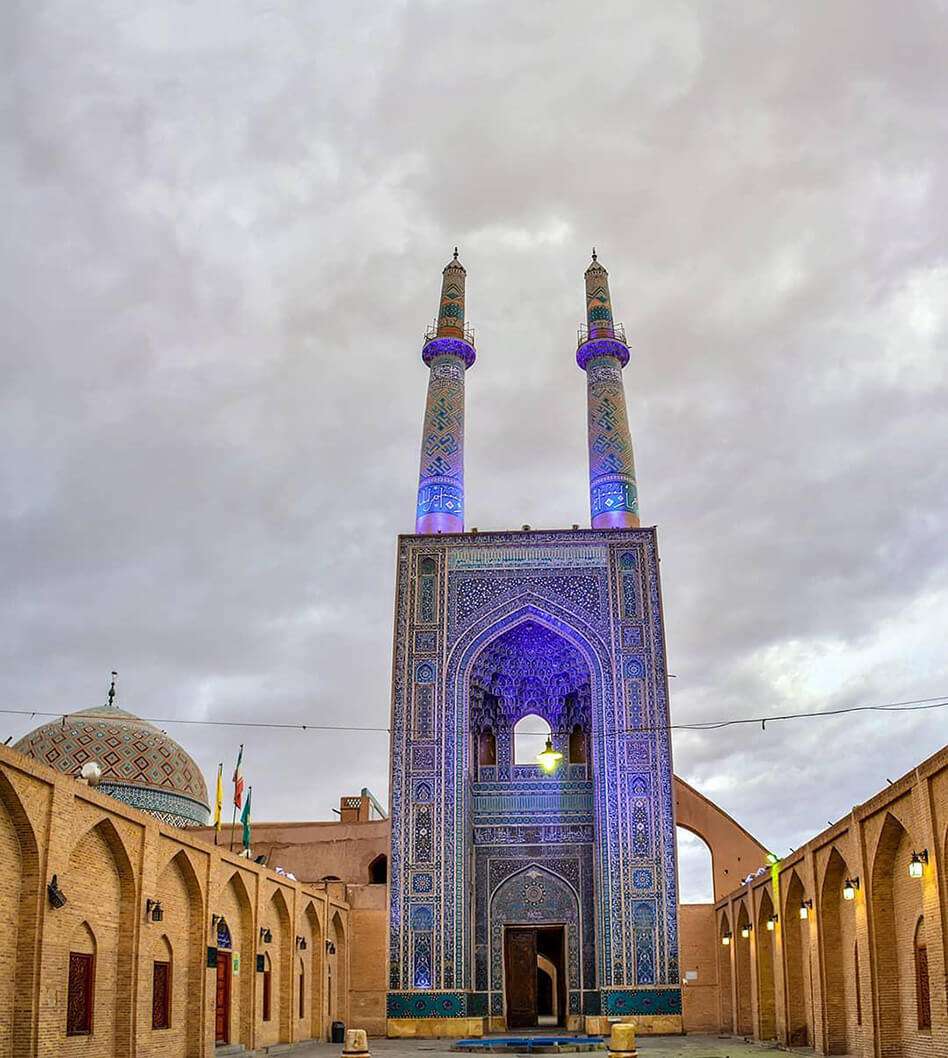
- Visiting
Jame Mosque of Yazd in Yazd
- ThemeHistory and Culture
- CodeIRSG99
- Duration1 hr(s)
Visiting the magnificent mosque originally built in the 12th century.
- Spring8:00-20:00 *
- Summer8:00-20:00
- Autumn8:00-20:00 *
- Winter8:00-20:00
* Best Time
Photos of the Jame Mosque of Yazd
Virtual Tour
Explore the Jame Mosque of Yazd
Jame Mosque of Yazd
Absolutely a jewel on the crown of the old city of Yazd, the magnificent Jame mosque is an architectural masterpiece of the Islamic era in Iran. The early structure of the old mosque, founded on a Sassanid fire temple, was commissioned by Alaodoleh Garshasb (1111-1133), during the reign of the Buyid dynasty.
The current building of the mosque dates back to 1324, built by Seyed Rokn al-din Mohammad Qazi. Several restorations were done during the 14th century such as the construction of two porches on the left and right sides of the dome. Shah Yahya completed the construction by building the eastern prayer hall and the altar. However, the mosque was largely reconstructed during the reign of Amir Chakhmaq, when Bibi Khatun commissioned some changes in 1433. The changes were as follow; the mosque was covered with marble stones, two columns on the left and right sides of the dome were tiled and the wooden pulpit was adorned with fine brickwork. In the Safavid era, in 1524, two minarets of the mosque were built. Later, in the Qajarid era, the courtyard was completely renovated and the Shahzadeh prayer hall was added to the western wing.
The mosque has seven entrance portals with the main one on the eastern side. Before entering the eastern monumental portal, there are two cylindrical marble stones carved in vegetal and animal patterns which were used as candle holders.
The portal is crowned by a pair of blue-tiled minarets with a height of 52-meters from the ground level. It is said that the minarets were commissioned by Aqa Jamal al-Din Mohammad, the minister of the Safavid king, Shah Tahmaseb. However, Maxim Siroux, the French orientalist, believed that they are added to the portal in 1422, during the reign of Amir Jalal al-Din Chakhmaq, the ruler of Yazd in the Timurid era. However, it underwent total renovation in 1895. An amazing point about the minarets is that one of them has two independent staircases, so two persons can pass through them in opposite directions without meeting each other.
Entering through the eastern portal, there is a domed, square-shaped vestibule with an unmatched collection of stone and tile inscriptions bearing repeated Kufic inscriptions of Quranic verses and attributes of God and Imams. The lofty eastern porch is about 30 m high and 14 m wide.
On the southern wing of the rectangular spacious courtyard, you will see the most excellent part of the mosque. The domed sanctuary and its portico – built during the Il Khanid period- represent an exquisite museum of the best Iranian- Islamic decorations. The walls and ceiling, covered with mosaic-tiled inscriptions and surrounded by geometric floral patterns and intricate strap works (girih tiling) in various shades of blue, altogether form a really stunning picture to behold. On the very southern end of the sanctuary, there is a spectacular altar (mihrab), a niche structure connected to the domed sanctuary through narrow short-roofed semi-circular pas-sways on both sides. The name of the builder and the time of construction of the prayer niche are inscribed on two star-shaped inlaid tiles.
The beautiful dome looks completely impressive. With a background mostly of beige color, it is delicately adorned with blue tiles bearing a repeated pattern of Kufic inscriptions on the façade.
There are two prayer halls on the west and east sides of the courtyard connected to the main sanctuary through columned arched-roof corridors (gholam gardesh). The summer prayer hall, on the eastern part, was built by the order of Shah Yahya Mozaffari in 1375 and the winter prayer hall on the west of the courtyard was added in 1821. The eastern hall consists of a shallow mihrab surrounded by a stucco-work vaulted arch and a mosaic tiled inscription decorated with floral motifs and Quranic calligraphies.
The western hall, known as Qiyasieh, is a columned hall bearing groined vaults – a typical feature of Timurid structures in Yazd- with a relatively shallow mihrab. The museum of the Jame Mosque opened to the public recently, is situated in the western hall. It is a valuable treasure containing the old carpets of the mosque, manuscripts of Quran, an old stone minbar, and a piece of Kaʻbeh’s curtain formerly kept in the mirror museum.
The library flanking the mosque was built in 1916 by Seyed Ali Mohammad Vaziri. It contains more than twenty thousand printed books and three thousand and five hundred seventy manuscripts. The 700-year-old brick-domed cistern, situated on the northeastern part of the mosque, is an underground octagonal water reservoir built on the famous Qanat of Zarch to supply fresh water.
Important Information
Additional Info
Cost Info
- Shooli Soup in Art House of Yazd1 €
- Kashk-o-Bademjan (eggplant and whey) in Art House of Yazd2 €
- Yazdi Faloudeh 1 €
- Destination
- Transportation Type
- Transportation Fee---
